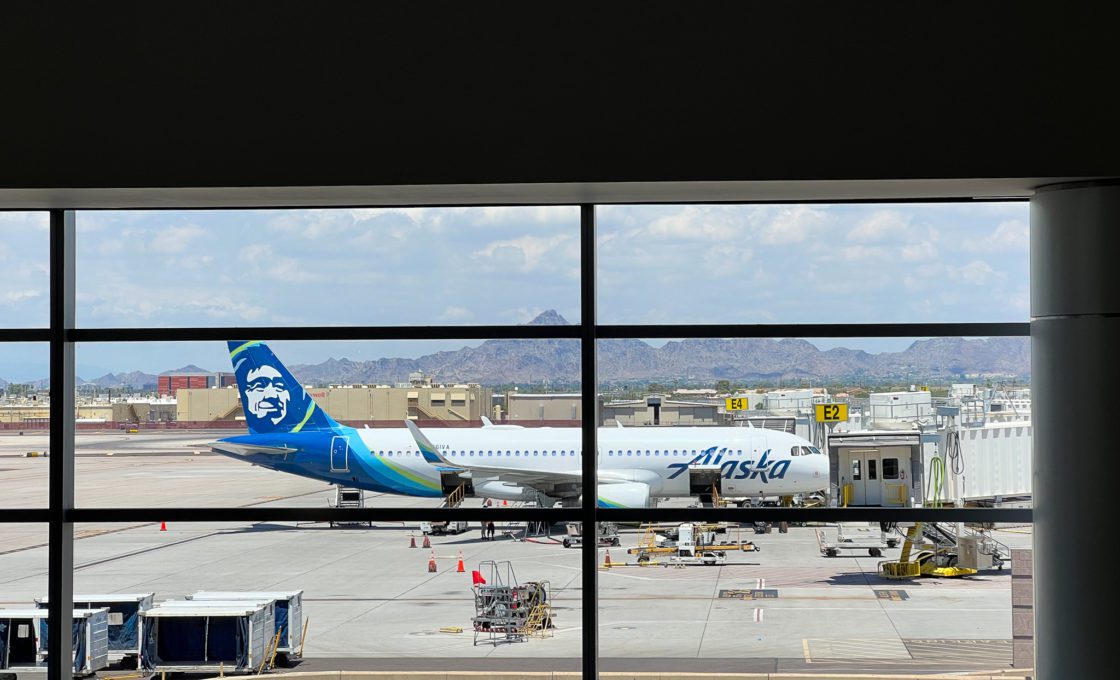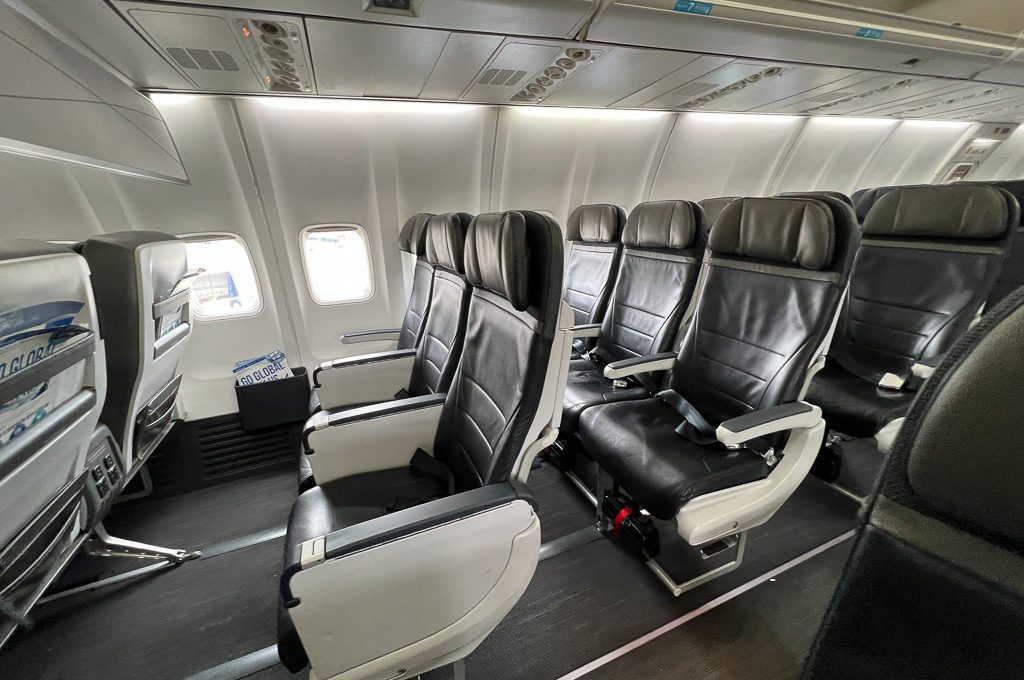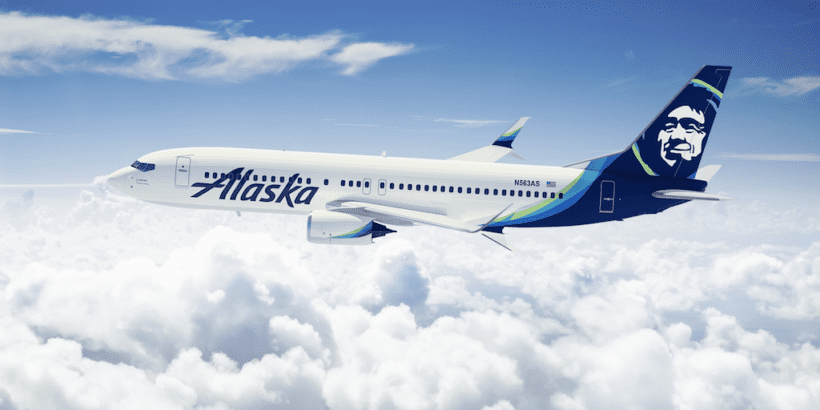Traveling with a pet is not always as straightforward as you might think due to the different rules and regulations that may apply. In this article, I will tell you everything you need to know about the Alaska Airlines pet policy including things like fees and the restrictions and limitations.
Table of Contents
What is the Alaska Airlines pet policy?
You can travel with your pet as a carry-on, checked pet, or cargo on Alaska Airlines as long as you provide adequate carriers for your pets, supply any needed documentation, and pay the fees I’ll outline below.
Alaska Airlines pet policy fees
Alaska Airlines charges the same fees whether you are flying with a checked pet or a carry-on pet. In both cases, the fee is $100 per flight.
Related: Bringing a Dog to a Hotel: Essential Tips for a Good Stay
How to avoid Alaska Airline pet fees
One of the easiest ways to avoid pet fees is to use the right travel rewards credit card.
The Capital One Venture Rewards Credit Card is a good card for general travel expenses and its points can be used to offset airline pet fees since they will often code as travel.
Other cards like the Chase Sapphire Reserve have a $300 travel credit that could be used on virtually any type of travel purchase including pet fees.
Tip: Check out the free app WalletFlo so that you can optimize your credit card spend by seeing the best card to use! You can also track credits, annual fees, and get notifications when you’re eligible for the best cards!

Alaska Airlines carry-on pet rules
If your furry friend is going to accompany you as a carry-on, here are some things to keep in mind.
Cabin restrictions
Alaska Airlines allows one pet carrier in first class and a total of up to five pet carriers in main cabin per flight.
18 years old or older
In order to fly with a pet in the cabin, the passenger must be 18 years or older. (This means that unaccompanied minors cannot fly with pets.)
Counts as a carry-on
Your pet carrier will count towards your carry-on baggage allowance. This means that you can bring a pet carrier plus a standard carry-on bag or a pet carrier plus a personal item.
Maximum number of pets
You may travel with a maximum of two pet carriers in main cabin but only when the adjacent seat is purchased by you as well.
Can’t occupy seats
Pets are not allowed to occupy seats by themselves.
Also, the passenger traveling with the pet cannot sit in an emergency exit row, bulkhead, or any seat with an airbag safety belt.
Types of pets allowed
Pets that are allowed in the cabin include dogs, cats, rabbits, and household birds. Dogs and cats must be at least eight weeks old and have been fully weaned.
Same carrier
Up to two pets of the same species and similar size may travel in the same carrier as long as none of their parts protrude from the carrier and they are not in distress.
Must stay in the container
Your pet must stay in its container including its head and tail with the door or flap secured at all times in the boarding area, Alaska Lounge, and while on board the aircraft.
During taxi, takeoff, and landing they must be stowed under the seat.
Animals with offensive odors or those that are creating loud disturbances must travel as checked pets.
Space requirements
Pets must be small enough to fit and stay comfortably inside the kennel under the seat. If your pet is traveling in the cabin, the following kennel sizes apply:
| Type | Kennel size | Dimensions (length x width x height) |
|---|---|---|
| Hard-sided | 50 | 17″ x 11″ x 7.5″ |
| Soft-sided | 50 | 17″ x 11″ x 9.5″ |
In order for your carrier to be accepted, it must:
- Be within the listed dimensions above
- Be clean and leak-proof with absorbent bedding made of material that is safe and non-toxic to the animal
- Fully enclose the animal and be escape-proof
- Have adequate air ventilation
- Be free of tears, cracks, or breaks
Tip: If you’re looking for the best ways to use your Alaska miles be sure to check out our 20 best uses of Alaska Airline Miles article.

Alaska Airlines checked pet rules
Alaska Airlines will accept most small domesticated pets in baggage and cargo compartments.
Pets that may travel in these climate controlled compartments include: cats, dogs, ferrets, guinea pigs, hamsters, household birds, non-poisonous reptiles, potbelly pigs, rabbits, and tropical fish.
Dogs and cats must be at least eight weeks of age and weaned.
You cannot have more than one live dog or cat six months of age or older in the same kennel.
No more than one puppy eight weeks to six months of age and weighing over 20 pounds can be transported in the same kennel.
However, if a puppy or kitten is eight weeks to six months end of comparable size and weigh under 20 pounds each, you may transport up to two in the same kennel.
All pets traveling in the cargo compartment on Alaska Airlines (including flights operated by Horizon and SkyWest, must have a health certificate dated within 10 days of initial travel and 30 days of return travel, when the return flight is booked in the same record.
If your pet is traveling in a kennel in the cargo compartment, there are special rules that need to be met. You can check out all of the restrictions here.
One more thing to note about pets flying in baggage or cargo compartments is that they are not allowed to fly that way on Alaska Airlines flights 2000-2999 or flights 3300-3499 during holiday travel times which include late November and December.
Here are the dates from 2019:
- November 21 – December 3, 2019
- December 10, 2019 through January 3, 2020
Related: Alaska Airlines Club 49: (Deals & Baggage Fee Benefits)

Cargo rules
If you plan on transporting your pet via cargo there are different rules.
You would usually only use this option whenever you are not flying with your pet/when the combined weight of the kennel and pet is over 150 pounds.
You can check about the guidelines with PetConnect air cargo.
Additional rules
Connections
If your pet is traveling as a checked pet and you have a transfer to another flight operated by Alaska Airlines, Horizon Air, or SkyWest Flight Series 3300-3499, you are allowed a maximum connection time of four hours at the connection city.
If your itinerary includes the connection to another airline, Alaska Airlines will not transfer the pet for you. Instead, you will have to make sure that you leave enough time to recheck your pet.
Note: If your flight is delayed, your pet may be placed in a kennel facility until they can be transported and you will be responsible for the costs due to weather related delays.
Breed restrictions
Brachycephalic or “short-nosed” dogs and cats are not accepted for travel in the cargo compartment on Alaska Airlines flights (including flights operated by Horizon and SkyWest,).
These include the following breeds:
Dogs
American Pit Bull, American Staffordshire Terrier, Boston Terrier, Boxer, Brussels Griffon, Bull Mastiff, Bulldog, Bull Terrier, Chow Chow, Dutch Pug, English Bulldog, English Toy Spaniel, French Bulldog, Japanese Boxer, Japanese Pug, Japanese Spaniel, Pekingese, Pug, Shih Tzu, Staffordshire Bull Terrier.
Cats
Burmese, Exotic Shorthair, Himalayan, Persian.
Sedation
It is not advised to sedate your pet before your flight since the effects of tranquilizers on animals at high altitudes is unpredictable. Check with your veterinarian for more guidance on this issue.
Airbus rules
On Alaska flights operated by Airbus aircraft, pets cannot travel in first class or in the baggage compartment.
Tip: Use WalletFlo for all your credit card needs. It’s free and will help you optimize your rewards and savings!
Temperature restrictions
When flying with your pet, be very mindful about the effects of the temperatures at your point of departure and arrival. It is recommended to fly early morning or late evening in the summer and mid day during the winter.
If the temperatures at your point of departure or arrival are too extreme or exceed certain limits, Alaska Airlines may decline to transport your pet for its own safety.

Alaska Airlines pet international restrictions
Before you choose to fly with your pet to an international destination, be sure to verify what type of documents and vaccinations may be necessary for your pet to enter the country.
Mexico
Only dogs and cats will be accepted for travel to Mexico.
Dogs and cats must have undergone a treatment against ectoparasites and endoparasites within 6 months of scheduled travel date.
If you do not complete this process, then government officials may require you to get in contact with a veterinarian and receive the treatment before you can enter Mexico. In that case, you will have to come out of pocket for the costs.
You are not allowed to use bedding or similar materials in the kennel. However, shredded paper and absorbent pads are acceptable.
You can pack food but only a day’s worth.
If you are traveling with three or more pets you will be subject to additional fees of approximately $1,600 pesos (approximately $150 USD) as mandated by the SAGARPA (Secretary of Agriculture, Livestock Production, Rural Development, Fishery and Food).
Be prepared to clear the commercial importation process at your destination if you go this route.
Alaska Airlines does not accept pets for Cargo or GoldStreak service to and from Mexico.
Costa Rica
Only dogs and cats will be accepted for travel. You will be required to show a valid certificate and specific documentation when traveling with your pets to Costa Rica. You can find out more details at one of the following resources:
- Embassy of the United States — Costa Rica
- Costa Rican Ministry of Agriculture
- US Department of Agriculture — APHIS
Hawaii
Only cats and dogs can be transported into Hawaii.
Hawaii is the only rabies-free state in the US and as a result it has some heightened restrictions on bringing your pets.
If you don’t follow the guidance and arrive with proper documentation, your pet may have to be quarantined for up to 120 days at your expense.
Below are some seasonal restrictions on pets accepted as checked baggage.
February: No pets are accepted as checked baggage on flights to or from Hawaii.
November 1 – January 31 and March 1 – April 1: Only 1 pet is accepted per aircraft as checked baggage on flights to or from Hawaii.
For more on the specific requirements for flying to places like Honolulu, Kona, and Kahului click here.

Service and support animals (and notice)
As of January 11, 2021 Emotional support animals are no longer accepted as service animals and may travel under Alaska Airlines’ Pet Policy.
Service animals and emotional support animals have specific requirements but there is no additional charge for them if they meet all of the requirements.
- The size of the animal must not exceed the footprint or personal space of your seat or foot area
- The animal must be under the control of the owner at all times
- Emotional support animals must be leased or in an approved kennel
- Minimum age for service or support animals is four months
- Animals are expected to be seated on the floor space below your seat or if larger than an infant seated in your lap
Animals accepted as trained service animals are:
- Cats
- Dogs
- Miniature horses
Find out more about Alaska Airline service animals and emotional support animals.
Alaska Airlines Pet Policy FAQ
The fees that you pay will depend on the type of pet that you have (e.g., service animal) and the method of transportation (checked, carry-on, etc.).
According to the DOT, over half a million pets flew in cargo in 2016 and of those animals, 26 died and 22 were injured. So the accident rate was 1 per 10,000 pets.
So if those stats are accurate, you have a one in 10,000 chance of something happening to your pet. Now those stats don’t account for the potentially stressful experience that your pet will have. For some people, a one in 10,000 chance is still too much risk with a pet while others will feel comfortable with those odds.
Personally, I would try to avoid shipping my pet in cargo if possible.
Alaska Airlines charges $100 per flight for both checked and carry-on fees.
You can find locations of animal relief areas at airports here.
You do not need a health certificate for travel if the pet is flying as a carry-on although some states have specific health and vaccination requirements.
All pets traveling in the cargo compartment will be required to have a health certificate dated within 10 days of outbound travel and 30 days of return travel.
Final Word
The Alaska Airlines pet policy is pretty straightforward. You are looking at paying $100 per flight. You just need to be mindful about restrictions on certain routes and destinations and you should be all set!
Daniel Gillaspia is the Founder of UponArriving.com and the credit card app, WalletFlo. He is a former attorney turned travel expert covering destinations along with TSA, airline, and hotel policies. Since 2014, his content has been featured in publications such as National Geographic, Smithsonian Magazine, and CNBC. Read my bio.

